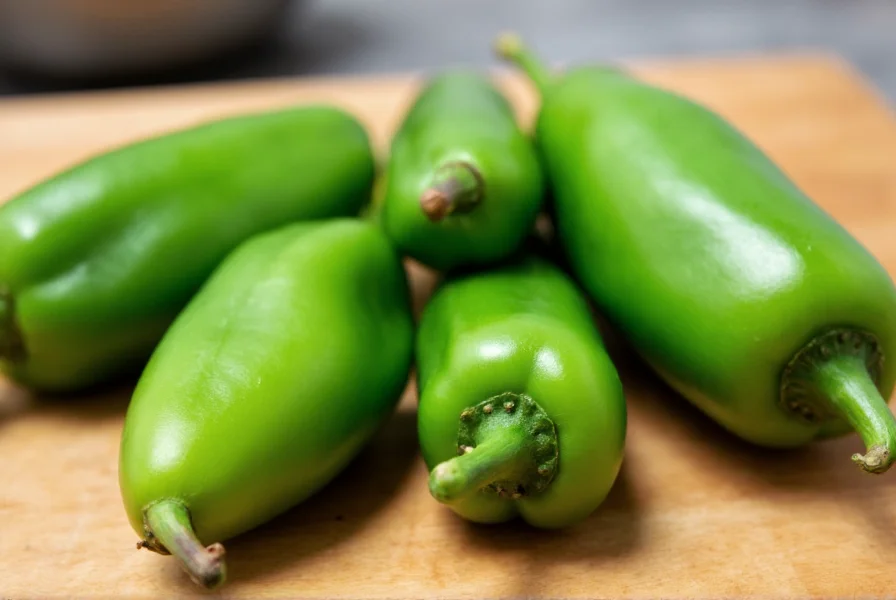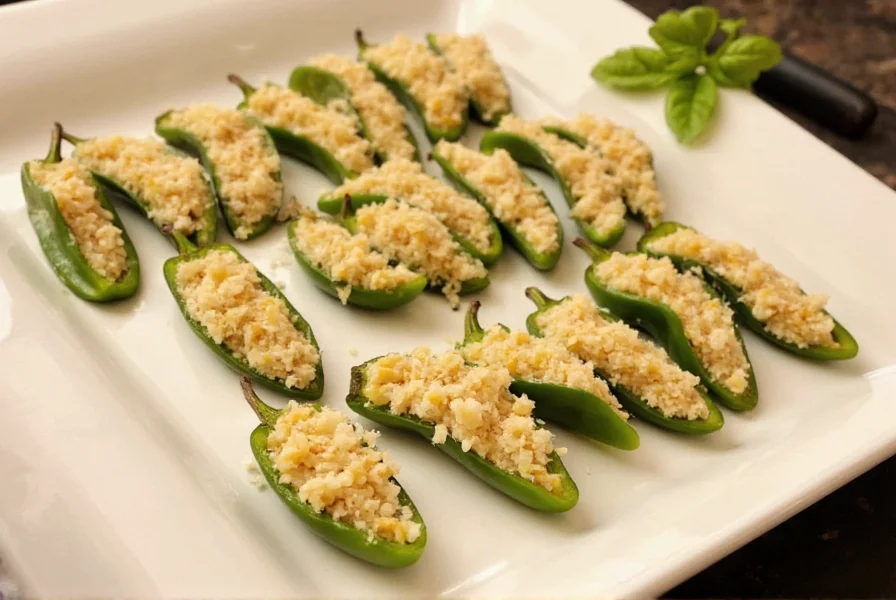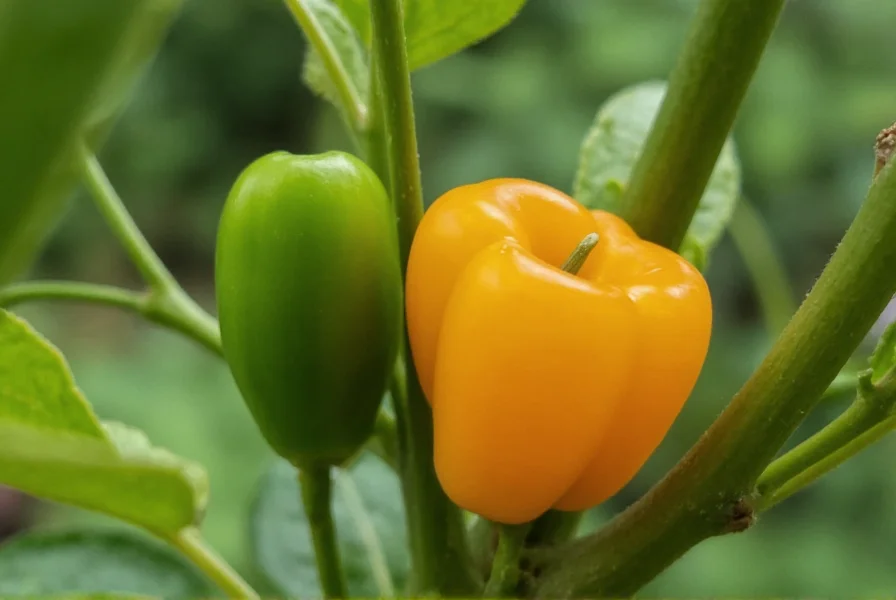Many home cooks and gardening enthusiasts search for \"coolapeno pepper\" when they actually mean the popular jalapeño variety. This misspelling likely stems from how the word sounds when spoken aloud. Understanding the true nature of jalapeños helps clarify culinary applications, growing requirements, and proper usage in recipes.
What Exactly Is a Jalapeño Pepper?
Jalapeños (Capsicum annuum) belong to the nightshade family and originated in the Mexican state of Jalapa, which gives them their name. These cylindrical peppers typically measure 2-3.5 inches long and 0.8-1.4 inches wide. When immature, they appear bright green, gradually turning red, orange, or yellow as they ripen.
The confusion around \"coolapeno\" pepper stems from phonetic misinterpretation. Unlike what the misspelling might suggest, jalapeños are not particularly \"cool\" - they deliver noticeable heat while remaining accessible to most palates. This balance makes them one of the most popular chili peppers worldwide.

Jalapeño Heat Level and Flavor Profile
Jalapeños rank between 2,500-8,000 Scoville Heat Units (SHU), placing them firmly in the medium-heat category. For reference:
| Pepper Variety | Scoville Heat Units | Relative Heat Level |
|---|---|---|
| Jalapeño | 2,500-8,000 | Medium |
| Serrano | 10,000-23,000 | Hot |
| Habanero | 100,000-350,000 | Very Hot |
| Bell Pepper | 0 | Mild |
Beyond their heat, jalapeños offer a grassy, bright flavor when green that develops sweeter, fruitier notes when red. The heat concentrates in the seeds and white pith (placenta), so removing these reduces spiciness significantly. This characteristic makes them versatile for \"jalapeño pepper uses in cooking\" across various heat preferences.
Common Jalapeño Varieties You Might Encounter
While searching for information about \"coolapeno pepper\" varieties, you'll actually find several jalapeño cultivars:
- Traditional Jalapeño - The standard green variety found in most grocery stores
- Early Jal - Matures faster, ideal for shorter growing seasons
- Mucho Nacho - Larger peppers with thicker walls, perfect for stuffing
- Black Jalapeño - Darker skin with slightly different flavor profile
- Red Jalapeño - Fully ripened version with sweeter taste
None of these are officially called \"coolapeno\" - this remains a persistent misspelling rather than a distinct variety. Understanding these actual varieties helps when selecting peppers for specific culinary applications or gardening projects.
Culinary Applications of Jalapeños
Jalapeños shine in numerous culinary contexts due to their balanced heat and flavor. When exploring \"jalapeno pepper information\" for cooking, consider these popular applications:
Fresh preparations: Sliced for nachos, diced in salsas, or stuffed with cheese. The seeds and membranes can be removed to reduce heat for those sensitive to spice.
Pickled jalapeños: A staple in Mexican cuisine, these offer tangy heat that complements sandwiches, burgers, and tacos. The pickling process slightly mellows the heat while preserving the distinctive flavor.
Smoked jalapeños (Chipotles): When smoked and dried, jalapeños transform into chipotle peppers, adding deep, smoky heat to sauces, stews, and marinades.

Growing Jalapeños Successfully
For gardeners searching \"growing jalapeno peppers at home\", these peppers are relatively straightforward to cultivate:
Start seeds indoors 8-10 weeks before your last frost date. Jalapeños need warm soil (70°F/21°C minimum) to germinate well. Transplant outdoors when daytime temperatures consistently stay above 60°F (15°C) and all danger of frost has passed.
These plants thrive in full sun and well-draining soil. Water consistently but avoid overwatering, which can cause root rot. Most varieties mature in 70-80 days from transplanting. Harvest when peppers reach full size and develop a glossy sheen - they'll continue to ripen to red if left on the plant.
Nutritional Benefits and Safety Considerations
Jalapeños offer more than just heat. They're rich in vitamin C (even more than citrus fruits by weight), vitamin B6, and capsaicin - the compound responsible for their heat that also provides potential health benefits.
When handling jalapeños, especially when preparing \"jalapeno pepper uses in cooking\", wear gloves to prevent capsaicin from irritating your skin or eyes. Never touch your face while handling hot peppers. If you experience burning, dairy products like milk or yogurt can help neutralize the capsaicin better than water.
Addressing Common Misconceptions
The \"coolapeno\" confusion represents just one of several common jalapeño misconceptions:
- Misconception: Red jalapeños are hotter than green ones
Reality: Heat levels vary more by individual pepper and growing conditions than color - Misconception: All jalapeños are extremely hot
Reality: They're medium-heat peppers, milder than many other varieties - Misconception: \"Coolapeno\" is a specific mild variety
Reality: This is simply a misspelling - no such variety exists
Understanding these facts helps both home cooks and gardeners make informed decisions when working with these versatile peppers.
Frequently Asked Questions
Is coolapeno pepper a real variety?
No, \"coolapeno\" is not a recognized pepper variety. It's a common misspelling of jalapeño pepper. No agricultural or botanical references list \"coolapeno\" as an official chili pepper variety.
How hot are jalapeño peppers compared to other chilies?
Jalapeños range from 2,500-8,000 Scoville Heat Units, placing them in the medium-heat category. They're significantly milder than habaneros (100,000-350,000 SHU) but hotter than poblano peppers (1,000-2,000 SHU). The heat can vary based on growing conditions and individual pepper characteristics.
Can I grow jalapeños in containers?
Yes, jalapeños grow well in containers. Use a pot at least 12 inches in diameter with good drainage. Container-grown jalapeños may require more frequent watering than garden-planted ones, but they offer the advantage of being movable to optimal sun locations. Most compact varieties thrive in containers.
Why do some jalapeños have corking or stretch marks?
Corking (those light brown streaks) occurs naturally when jalapeños grow quickly, often due to abundant water and nutrients. Contrary to belief, corked jalapeños aren't defective - many experts consider them more flavorful. The streaks don't affect taste or heat level, just appearance.
How can I reduce the heat of jalapeños in cooking?
To reduce heat, remove all seeds and the white membrane (placenta) inside the pepper, as this contains most capsaicin. Soaking sliced jalapeños in salt water or milk for 15-30 minutes can also draw out some heat. Cooking jalapeños can mellow their heat slightly, while pickling tends to preserve more of the original heat level.











 浙公网安备
33010002000092号
浙公网安备
33010002000092号 浙B2-20120091-4
浙B2-20120091-4